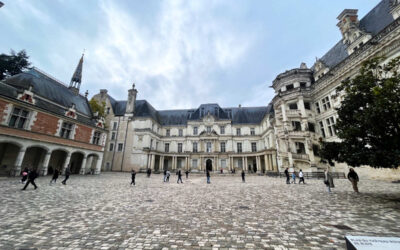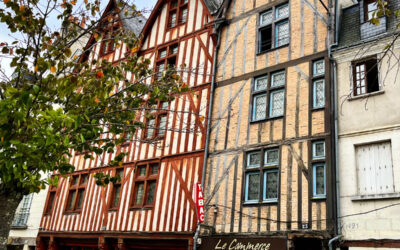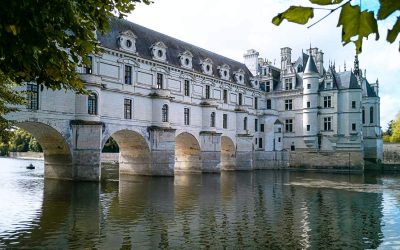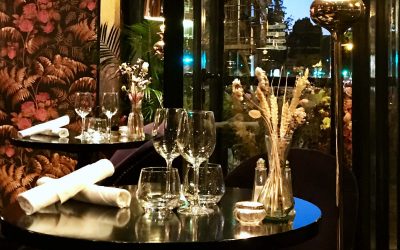As the capital of the Centre-Val de Loire region, the historic city of Orléans is one of the oldest and most influential cities in France.
From giving its name to several branches of the French royal family, the city of New Orléans in the United States, and even a nickname for Joan of Arc, this ancient French city has made its mark in the history books.
Located in the Loire valley, it is a beautiful city surrounded by several world-famous châteaux that are within an hours drive. But even before the chateaux of the Loire, the city of Orléans has been one that people flocked to. So let’s see why Orleans is so famous and what there is to see and do in the city, shall we? Allons-y!
- History of Orlèans
- Things to do in Orlèans
- 1. Cathédrale Sainte-Croix d'Orléans
- 2. Statue of Jeanne d'Arc
- 3. Parc Floral de la Source
- 4. Musée des Beaux-Arts d'Orléans
- 5. Place du Martroi
- 6. Old town
- 7. Hôtel Groslot
- 8. Maison de Jeanne d'Arc
- 9. Musée Historique et Archéologique de l'Orléanais
- 10. FRAC Centre
- 11. St. Paul Notre Dames des Miracles
- 19. Loire Valley châteaux
- 20. Wine tastings
- How to get to Orlèans?
- How easy is it getting around?
- How many days should you spend?
- Where should you stay?
History of Orlèans
Orleans is located on the most northern point of the river Loire, at a point that it is relatively easy to cross. This position meant that settlements have been found here dating back to antiquity. It was originally called Cenabum, and was a Gaul stronghold. It was here that the Celtic gaul tribe of the Carnutes and their Druids held their annual assembly.
Cenabum and the Carnutes were invaded by massacred by Julius Caesar and in his conquest of Gaul in 52 BC. Eventually in 3rd century AD, Roman Emperor Aurelian rebuilt the city and renamed it civitas Aurelianorum (“city of Aurelian”) after himself. It is from this name that the name turned into “Orléans”.
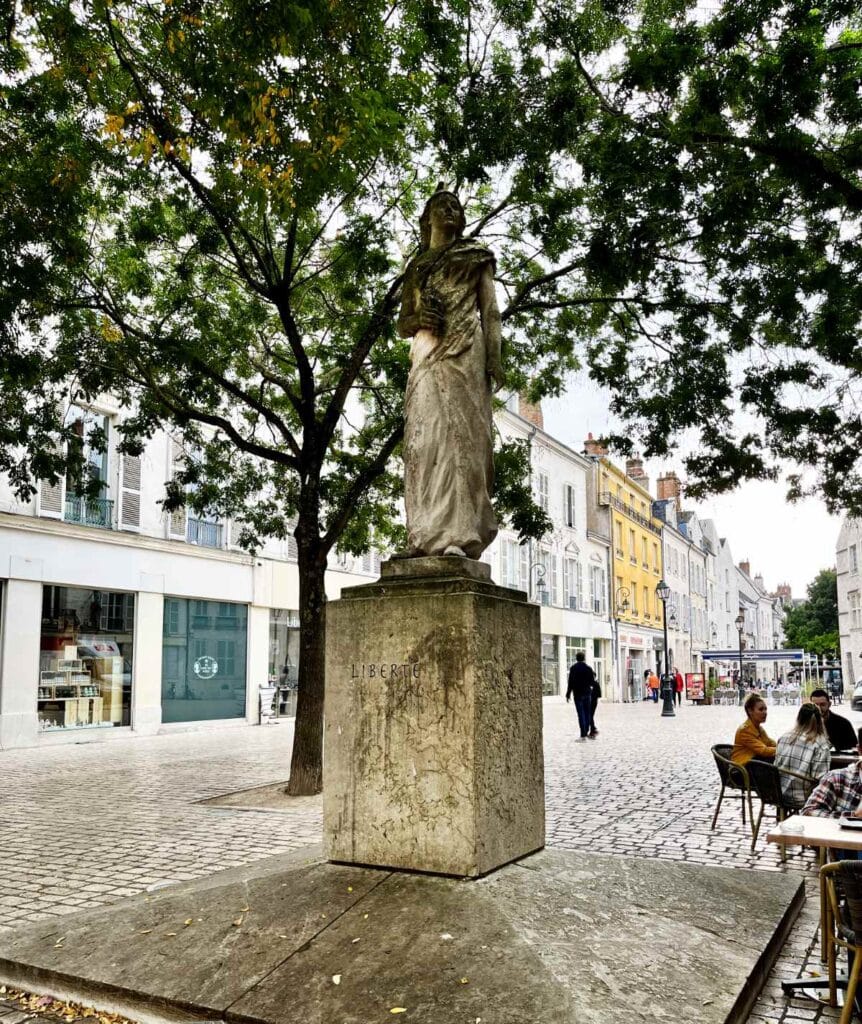
Attila and the Huns laid siege to Orleans in 451, but were defeated by Merovech, the King of the Salian Franks allied with the Roman General Aetius.
After the fall of the Roman empire, Orléans became one of the capitals of the Kingdom of the Franks. It was the Merovingian period during which Merovech’s grandson Clovis I divided the country amongst his own sons.
Eventually, the city became the capital of the Duchy of Orléans held by the Valois-Orléans family, a cadet branch of the French royal family.
As Paris grew in importance, so did Orléans. There were few bridges over the dangerous river Loire, and Orléans had one of them. It became one of medieval France’s three richest cities, along with Paris and Rouen. But it was also this position that also made the city an important point during the fighting in the 100 Years’ War between the Kings of France and England.
Orleans is particularly known for the famous victory of Joan of Arc here during the siege of Orléans in 1429. Joan became known as the “Pucelle d’Orléans” or “Maid of Orleans” for her strategic prowess that allowed her to defeat the Plantagenets here.

In the 18th century, the French city of Orléans gave its name to the colonialized settlement at the mouth of the Mississippi river. It was named la Nouvelle-Orléans in honour of the underage King Louis XV’s uncle, the Duke of Orléans who served as regent in his name.
During WWII, the city was occupied by the German Reich and heavily bombed by the Allies. Much of the destruction was rebuilt after the war however, and today Orléans is a thriving city with various flourishing industries and plenty of visitors.
Things to do in Orlèans
1. Cathédrale Sainte-Croix d’Orléans
The Sainte-Croix d’Orléans Cathedral is a Gothic-style Roman Catholic cathedral that is the episcopal seat of the diocese of Orléans. A building has stood on this spot dating back to at least the 4th century.
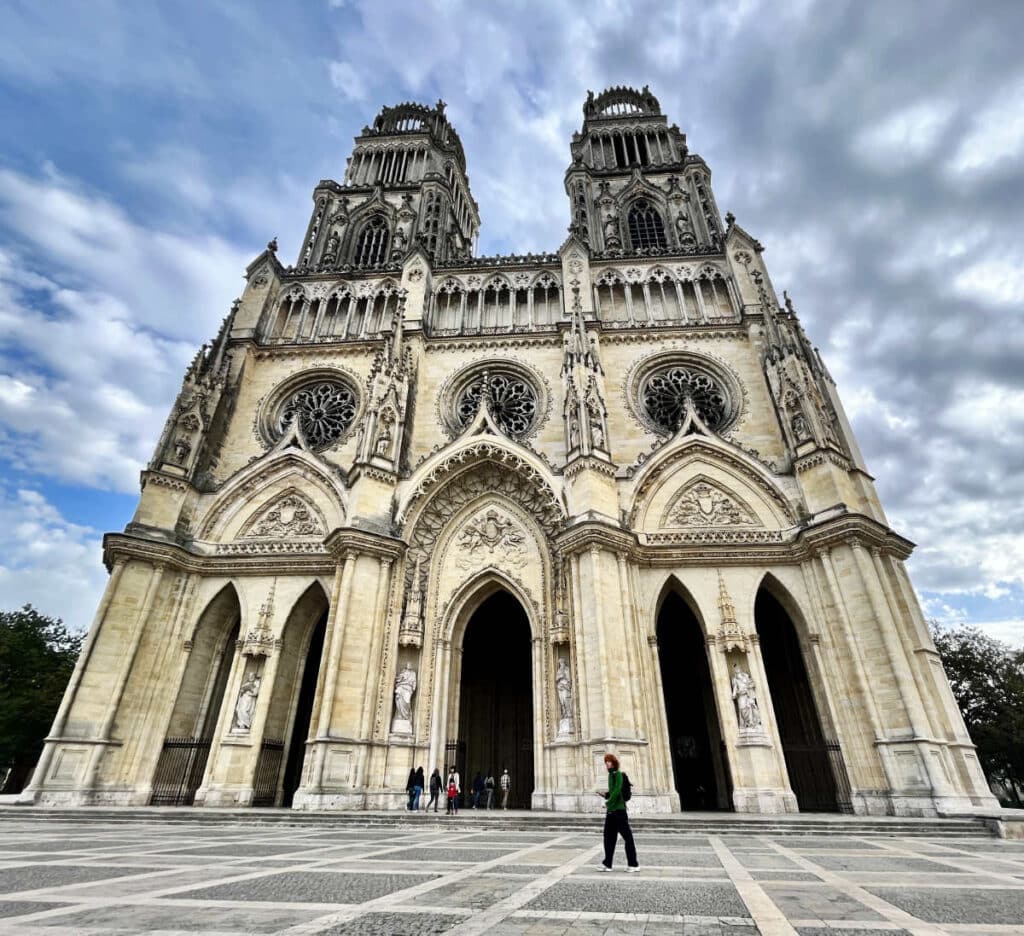
The 6th century historian, Grégoire de Tours relates that in 585 Mérovingien King Gontran attended mass in the church of Orleans, marking an important visit.
Joan of Arc is also believed to have prayed here several times during her battles against the English. In 1568, a group of Protestant huguenots blew up the Cathedral, bringing down a large portion of it.
The current Cathedral of Orleans dates back to 1601, when the 1st stone was laid by King Henri IV (who was a part-time protestant himself) and his wife Queen Marie de Medicis. It was built in the gothic style, in keeping with the other great cathedrals of France.
It has 5 large bells in the north tower, named for the saints Jeanne d’Arc, Michel, Catherine, and Marguerite, as well as distinguished Catholic Félix Dupanloup.
2. Statue of Jeanne d’Arc
No visit to Orléans would be complete without visiting the statue of Joan of Arc. It has pride of place in the center of the city in one corner of Place du Martroi.
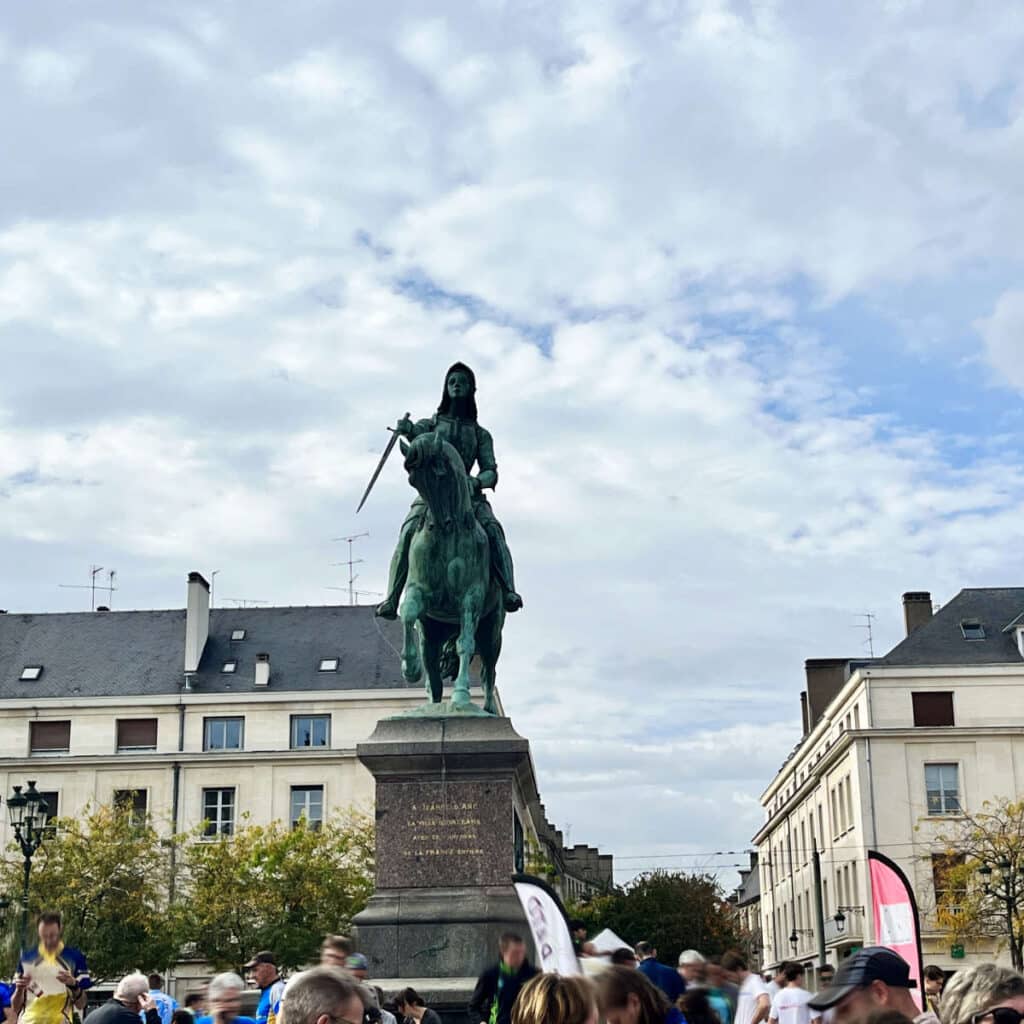
The bronze statue of Joan was inaugurated on May 8 1855 on the annual “feast of Joan of Arc” as one of the patron saints of France.
3. Parc Floral de la Source
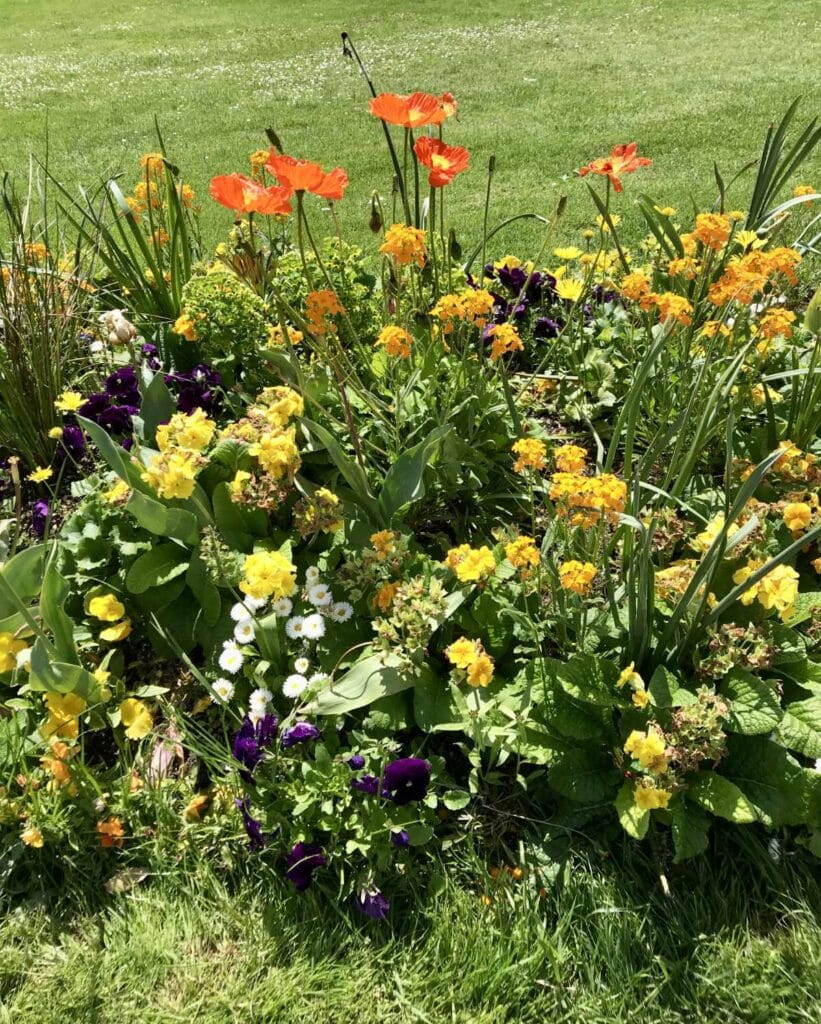
4. Musée des Beaux-Arts d’Orléans
Right next to the Cathedral of Orleans is the Musée des Beaux-Arts. It holds over 2,000 paintings of French artists such as Eugène Delacroix Gustave Courbet, Paul Gauguin and Pablo Picasso.
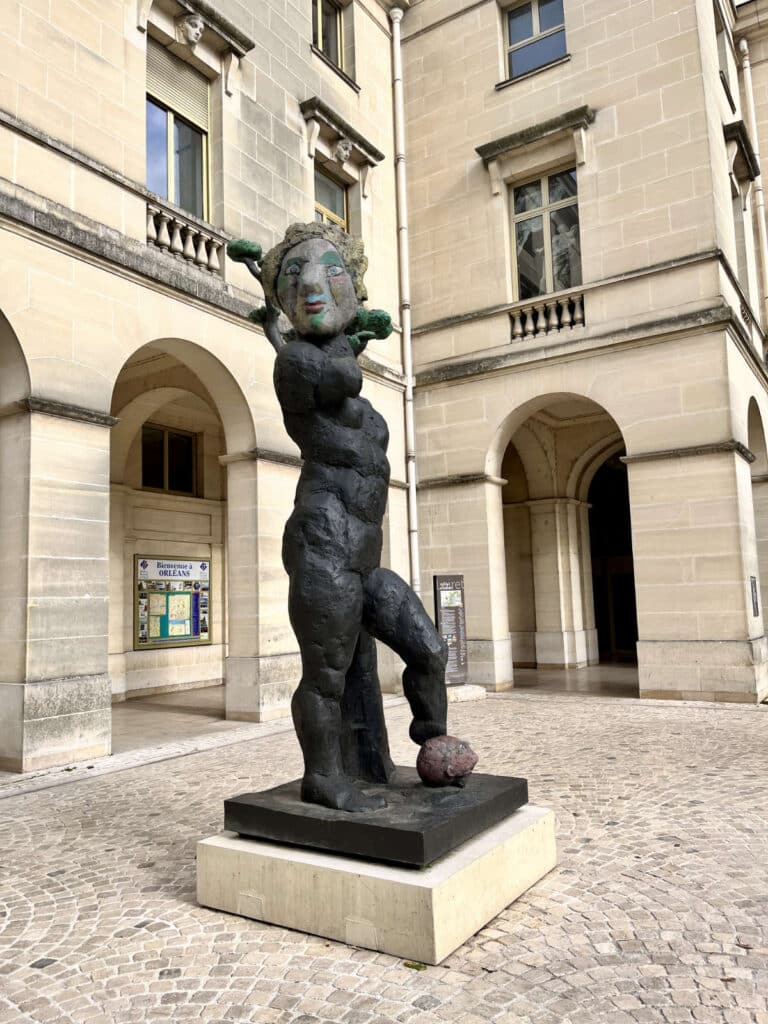
There are also over 700 sculptures with pieces from artists like Baccio Bandinelli and Auguste Rodin. The museum was founded during the French Revolution and meant to bring art to the people.
The Museum is not open on Mondays, and has is only open in the afternoon on Sundays.
5. Place du Martroi
Place du Martroi with its statue of Jeanne d’Arc is undoubtedly the unofficial center of the city.

This is usually the grand meeting point for events in the center, including the Marché Nocturne food market that is held every Friday evening. It is a busy and lively square, so don’t hesitate to have a seat and watch the passersby.
6. Old town
Located near the Loire river, the Old town of Orléans is quite different from the newer large boulevards that were constructed after WWII. In this older part of town, you can see the traditional timbered buildings that have retained much of their character.
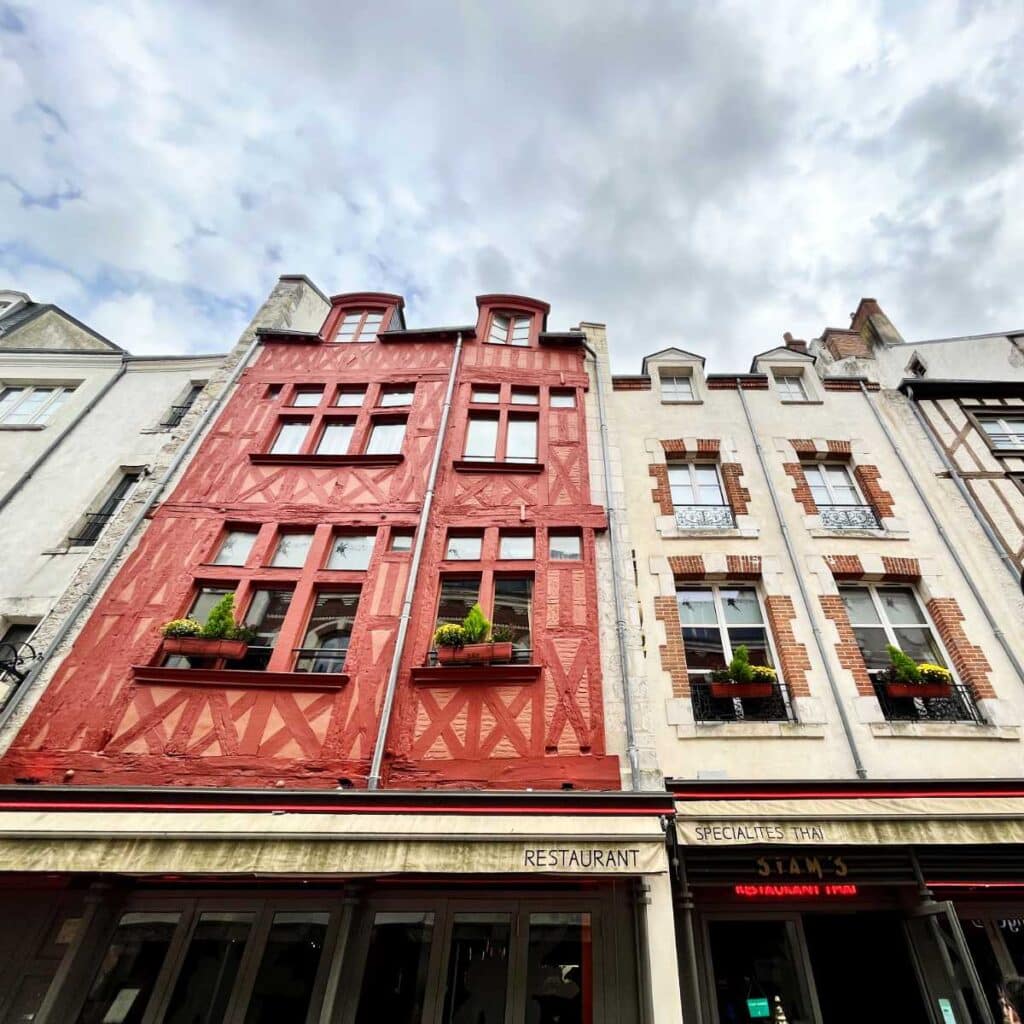
Some of these buildings have been reconstructed, but in very much the traditional style. There are plenty of charming small shops and restaurants in the area, and it is a wonderful place to grab lunch or dinner.
7. Hôtel Groslot
The Hôtel Groslot is a sprawling 16th century hotel particulier (private mansion) that is just footsteps away from the Cathedral of Orleans.

Belonging to the Groslot family, it is said to have welcomed in its day several French royals such as François II, Charles IX, as well as Catherine de Médicis.
These days it is owned by the city of Orléans and holds weddings and special events. Guided visits are usually available inside Hotel Groslot, except on days when there is a wedding.
8. Maison de Jeanne d’Arc
The Maison de Jeanne d’Arc or “House of Joan of Arc” is a historical museum dedicated to her, as one of the most famous women in France. It is a medieval-style timber and woodframe house located in the center of the city, near the Rue de Jeanne d’Arc and interestingly enough, the Rue d’Angleterre (meaning “Road of England”).
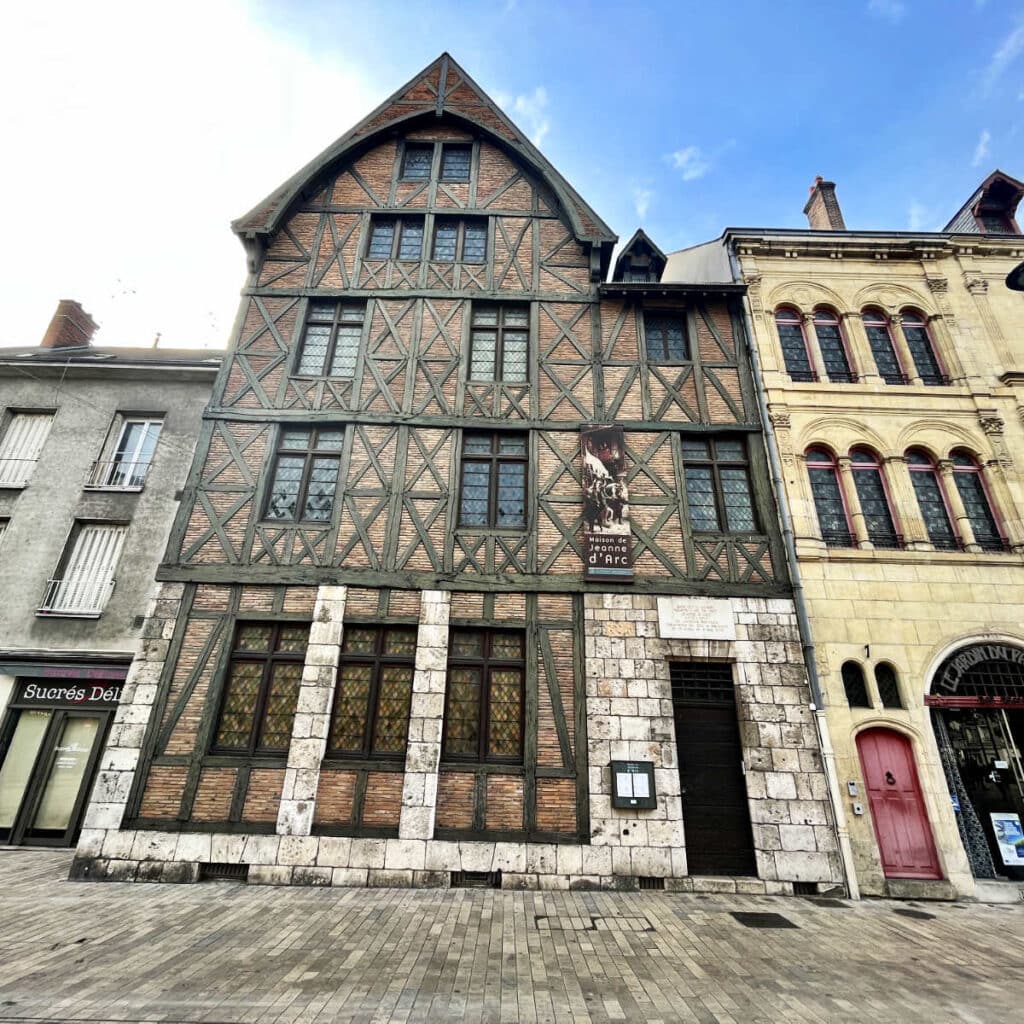
It is at this location that Joan is believed to have stayed for a few weeks in 1429 after fighting the English who had laid seige to Orléans. At the time, the house belonged to Jacques Boucher, the Treasurer General of Prince Charles I of Orléans (Duke of Orléans).
The original house was destroyed during WWII and reconstructed after the war. It holds a vast collection of papers, artefacts, posters, and engravings related to Joan, spanning from her time to the 21st century.
9. Musée Historique et Archéologique de l’Orléanais
Founded in 1823, the History and Archeology museum of Orleans is located in a former hotel particulier or private mansion. It used to be the “Maison de Diane de Poitiers” and going through many iterations before becoming a museum. (Diane de Poitiers was the King Henri II’s mistress who was given the Château de Chenonceau on the water.)
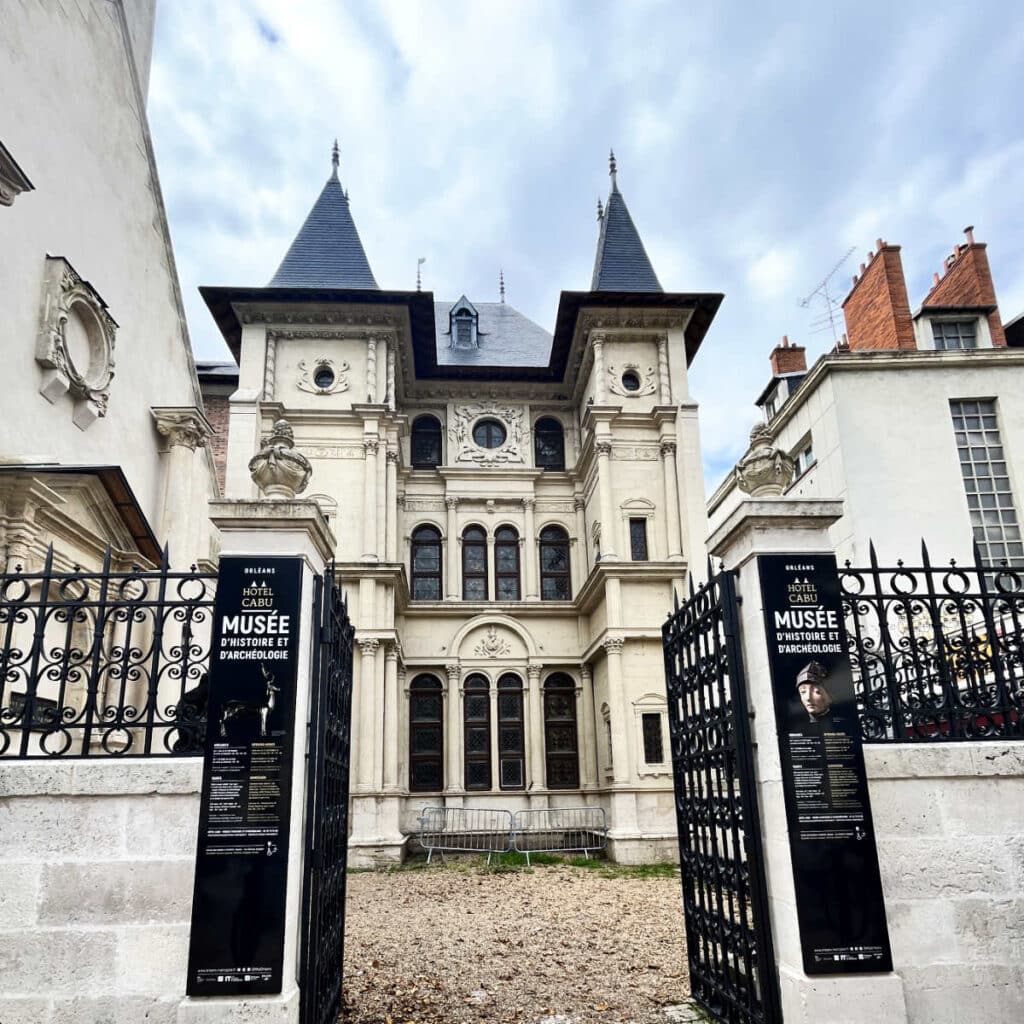
Inside, there is a set of statuettes dating from the Gallo-Roman era known as the treasure of Neuvy-en-Sullias. It also holds various collections of medieval objects and about the history of Orléans.
10. FRAC Centre
The FRAC center is a public collection of contemporary art that is located just a few blocks away from the Hôtel Groslot. It focuses on ecology along with the role of architecture in nature, while also holding a variety of temporary exhibitions.
It has varying opening hours depending on the season so check on their website before heading over.
11. St. Paul Notre Dames des Miracles
The Church of Saint Paul in Orléans is a catholic church that originally dated back centuries.
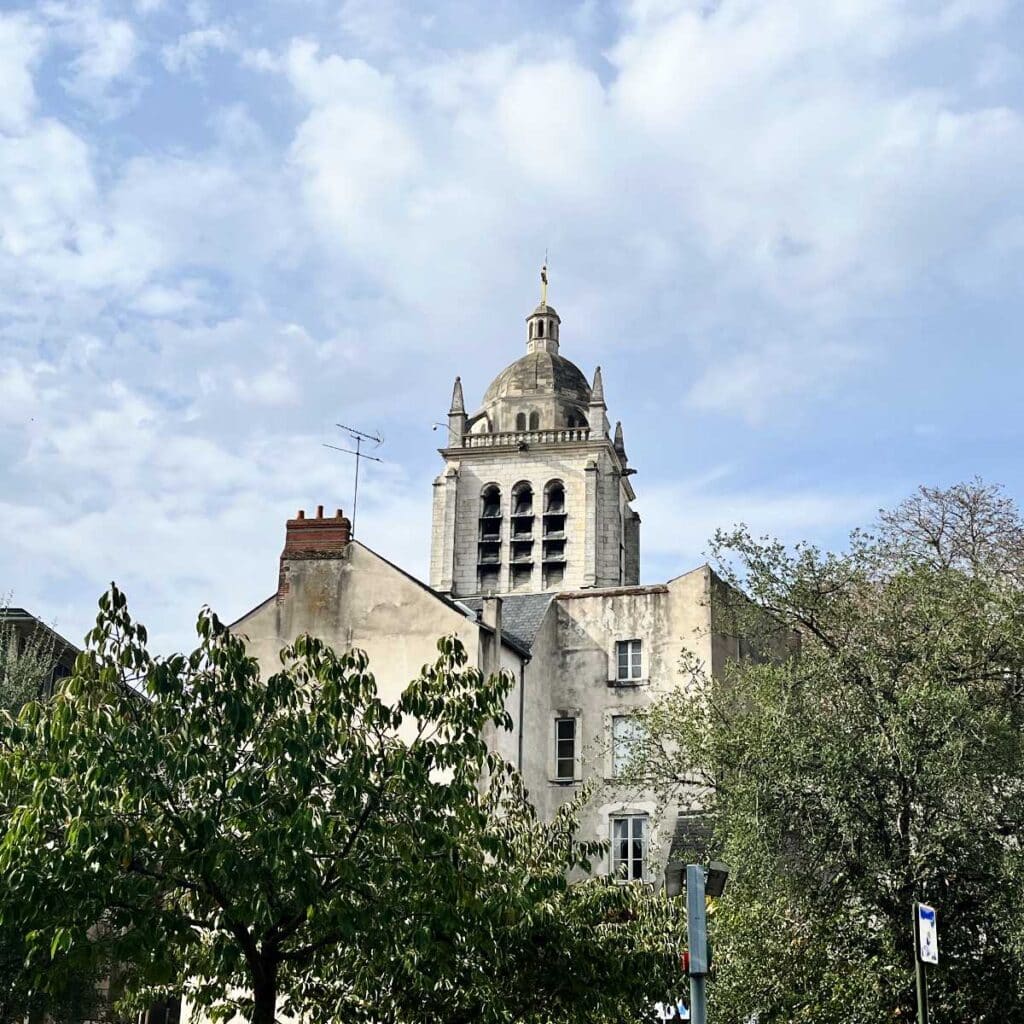
Much of it was destroyed in 1940 under German attacks, however the bell tower and the Notre-Dame des Miracles chapel were preserved. The building is listed as historical monument, and has beautiful stained glass windows inside.
19. Loire Valley châteaux
The Loire Valley is famous for its multitude of châteaux and the city of Orléans is a great place to base yourself while visiting a few châteaux.
The châteaux of Chambord, Blois, Chenonceau, Chaumont and Chéverny are within 1 hour, and the city of Amboise (with the Château Royale d’Amboise) is also within 1hr15. The various Loire Valley châteaux are officially recognized on the UNESCO world heritage list.
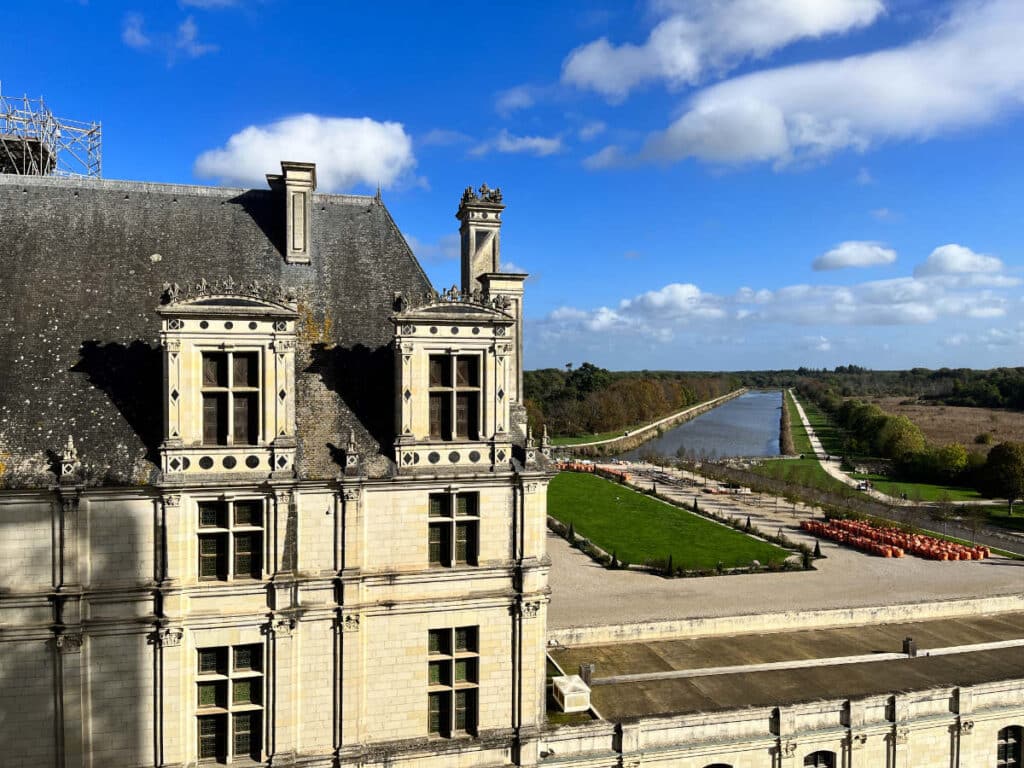
Along with those famous châteaux and royal palaces, there are several smaller châteaux for nobility who lived in the area and built housing near the seat of power during the Renaissance.
In all, you can easily spend a week in the area, going from château to château and exploring the area. (For those travelling with children, there is also the Zoo de Beauval at Saint-Aignan within 1h30 minutes of Orléans, if you want to a break between the châteaux.)
20. Wine tastings
One of the local specialties in and around Orléans is the Loire valley wines. Although not as famous as other French wines, they have a following of their own and are gaining in popularity.
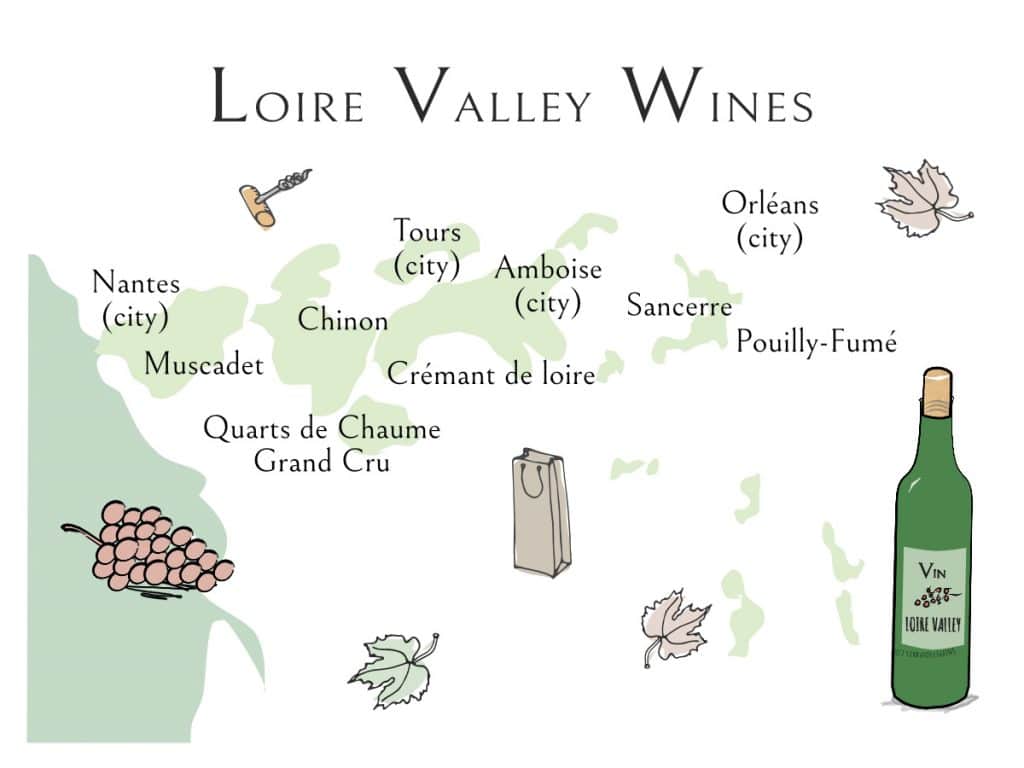
The Loire Valley mostly produces white wines, but there are some red wiens as well. The area is the second-largest concentration of sparkling-wine producing vines in France after the Champagne region.
Having French royalty like François I and Catherine de Medici nearby as well as the British royals, meant that their courtiers and followers all got used to drinking wines from the Loire Valley, and effectively marketed the wines to other nobles and royals around France and Europe.
There are many wine-tasting tours that will combine with chateaux visits in the Loire Valley.

How to get to Orlèans?
The city of Orléans is quite accessible from Paris by car and by train. It takes approximately 1h20 to drive from Paris depending on traffic. By train, you can take a TER train from Paris’s Austerlitz station to Orlèans which takes approximately 1h40.
How easy is it getting around?
The city of Orléans is quite walkable, and there are several large parking lots that you can park your car at and visit all the centrally located sights. One of the larger parking lots is right under Cathedral of Orléans. From there you can walk to all of the major sights that are in central Orléans.
How many days should you spend?
I would suggest spending at least a day in Orléans, to explore its different streets and neighborhoods. You can choose to base yourself here and stay overnight for a few days as there are several châteaux and vineyards in the surrounding area.
Where should you stay?
There are a couple wonderful hotels in Orléans around the center of the city. Some recommended hotels are:
- €€€ – Escale Oceania Orléans
- €€€€ – Empreinte Hotel & Spa
You can also choose to stay in nearby cities of Amboise, Blois, or Tours if you are looking to visit the châteaux.

If you enjoyed that article, you may like to read more about traveling around the Loire Valley. A bientôt!

